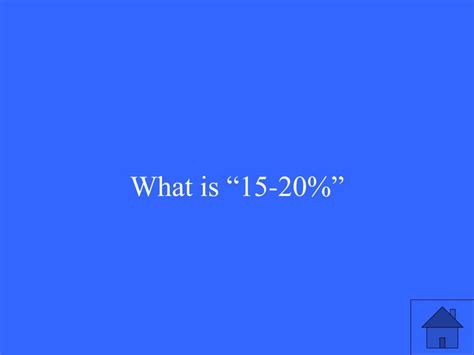Introduction

The fraction 15/20 represents a part of a whole. It is often used to describe a fraction of a group or a percentage. For example, if a group of 20 people includes 15 women, then the fraction of women in the group can be expressed as 15/20.
Understanding Fractions
A fraction is a numerical expression that represents a part of a whole. It consists of two numbers separated by a horizontal line. The top number, called the numerator, indicates the number of parts being considered. The bottom number, called the denominator, indicates the total number of parts in the whole.
In the case of 15/20, the numerator is 15 and the denominator is 20. This means that 15/20 represents 15 out of 20 equal parts.
Simplifying Fractions
Fractions can be simplified by finding the greatest common factor (GCF) of the numerator and denominator and dividing both by that factor. The GCF of 15 and 20 is 5, so we can simplify 15/20 by dividing both numbers by 5:
15/20 = (15 ÷ 5) / (20 ÷ 5) = 3/4
Applications of 15/20
The fraction 15/20 has various applications in different fields:
- Mathematics: Fractions are essential in mathematical operations, such as addition, subtraction, multiplication, and division.
- Science: Fractions are used to represent ratios and proportions in fields such as chemistry and physics.
- Finance: Fractions are used to calculate interest rates, percentages, and other financial concepts.
- Engineering: Fractions are used to represent measurements and ratios in areas such as civil engineering and mechanical engineering.
- Education: Fractions are introduced in early mathematics education to develop number sense and understanding of parts and wholes.
Common Mistakes to Avoid
When working with fractions, it is important to avoid common mistakes such as:
- Dividing the numerator by the denominator incorrectly: Always divide both the numerator and denominator by the GCF to simplify fractions properly.
- Comparing fractions with different denominators incorrectly: To compare fractions with different denominators, first convert them to equivalent fractions with a common denominator.
- Using mixed numbers incorrectly: Mixed numbers, such as 1 1/2, are fractions that combine a whole number with a fraction. Be careful to convert mixed numbers to improper fractions before performing mathematical operations.
How to Simplify 15/20 Step-by-Step
- Find the GCF of 15 and 20, which is 5.
- Divide both the numerator and denominator by 5:
15 ÷ 5 = 3
20 ÷ 5 = 4
- The simplified fraction is 3/4.
Why 15/20 Matters
Understanding fractions is essential for various reasons:
- Developing logical reasoning: Fractions help students develop logical reasoning skills by requiring them to think about parts and wholes.
- Solving real-world problems: Fractions are used in everyday situations, such as measuring ingredients, calculating discounts, and understanding statistics.
- Preparing for higher-level mathematics: Fractions form the foundation for understanding more complex mathematical concepts, such as algebra and calculus.
Benefits of Understanding 15/20
Having a clear understanding of 15/20 offers several benefits:
- Improved mathematical skills: Simplifying and manipulating fractions enhance overall mathematical abilities.
- Enhanced problem-solving capabilities: Fractions provide a framework for solving problems involving parts and wholes.
- Increased confidence: Overcoming the challenges of fractions builds confidence in mathematical abilities.
Table 1: Applications of 15/20 in Different Fields
| Field | Application | Example |
|---|---|---|
| Mathematics | Addition of fractions | 15/20 + 5/20 = 20/20 |
| Science | Chemical composition | A solution containing 15 grams of solute in 20 grams of solvent has a solute concentration of 15/20 |
| Finance | Interest rate calculation | A loan with a 15% annual interest rate has an interest rate of 15/20 per year |
| Engineering | Structural analysis | A beam with a cross-sectional area of 15 square inches out of a total cross-sectional area of 20 square inches has a strength of 15/20 |
| Education | Number sense development | Fraction circles demonstrate the representation of 15/20 as 15 equal parts out of 20 total parts |
Table 2: Common Mistakes to Avoid When Working with Fractions
| Mistake | Example | Correction |
|---|---|---|
| Incorrect division | Dividing only the numerator | Divide both the numerator and denominator by the GCF |
| Invalid comparison | Comparing 15/20 to 10/15 directly | Convert both fractions to a common denominator (20/20) |
| Improper use of mixed numbers | Subtracting 1 from 1 1/2 | Convert the mixed number to an improper fraction (3/2) before subtracting |
Table 3: Step-by-Step Approach to Simplifying 15/20
| Step | Description |
|---|---|
| 1 | Find the GCF of 15 and 20 (5) |
| 2 | Divide the numerator (15) by the GCF (5) |
| 3 | Divide the denominator (20) by the GCF (5) |
| 4 | Write the simplified fraction (3/4) |
Table 4: Benefits of Understanding 15/20
| Benefit | Description |
|---|---|
| Improved mathematical skills | Enhanced ability to simplify and manipulate fractions |
| Enhanced problem-solving capabilities | Better understanding of problems involving parts and wholes |
| Increased confidence | Overcoming challenges with fractions leads to improved self-belief |
Conclusion
The fraction 15/20 represents 3 out of 4 equal parts or 75%. Understanding and simplifying fractions is essential for mathematical reasoning, problem-solving, and various applications in different fields. By avoiding common mistakes and following a step-by-step approach, individuals can develop a strong grasp of fractions, including 15/20.
